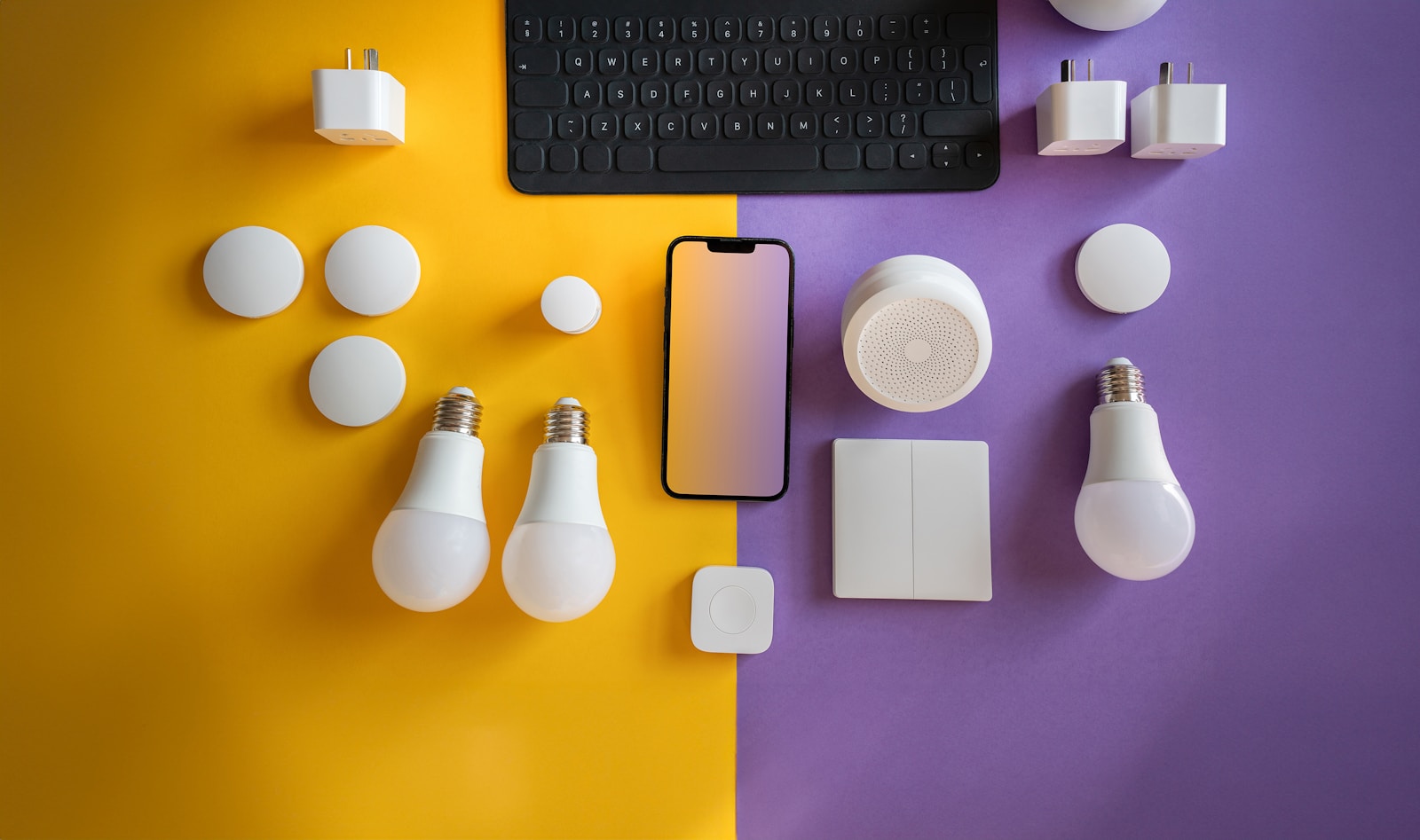TL;DR:
– Implementing IoT in your home offers increased energy efficiency, security features, and convenient automation.
– Top IoT devices for a smart home include smart thermostats, home security systems, and connected lighting systems.
– IoT enhances sustainable living through monitoring energy consumption, water conservation, and waste reduction.
– Challenges of IoT integration in homes include privacy concerns, compatibility issues, and initial cost considerations.
– The future of IoT home technology involves integration with renewable energy, AI, and health applications.
Introduction
Welcome to the realm of innovation and sustainability – the IoT Home. In this rapidly evolving digital era, where technology intertwines seamlessly with our daily lives, the concept of IoT Home emerges as a beacon of futuristic living. Imagine a dwelling that not only shelters you but actively works towards minimizing your carbon footprint and maximizing energy efficiency. As an expert in Futuristic Homes and Sustainable Living, I am thrilled to unveil 5 groundbreaking solutions that epitomize the harmony between technology and sustainability. Let’s embark on a journey where smart homes meet eco-conscious living, setting a new standard for a greener tomorrow.
The Benefits of Implementing IoT in Your Home
Smart homes equipped with IoT technology offer a myriad of benefits that enhance our everyday lives. Let’s explore how integrating IoT devices can revolutionize your home environment.
Increased Energy Efficiency
IoT devices, such as smart thermostats and energy-monitoring systems, enable precise control over energy consumption. By optimizing heating, cooling, and lighting based on usage patterns, you can significantly reduce your energy bills and minimize environmental impact.
Enhanced Security Features
With IoT-powered security cameras, smart locks, and motion sensors, you can monitor your home remotely and receive real-time alerts in case of suspicious activities. This added layer of security provides peace of mind and safeguards your property against potential threats.
Convenience and Automation
Imagine a home where your lights turn on automatically when you enter a room, or your coffee maker starts brewing as soon as you wake up. IoT devices enable seamless automation of daily tasks, making your life more convenient and efficient.
Investing in IoT technology for your home is not just a trend—it’s a practical way to improve energy efficiency, enhance security, and streamline your daily routines.
Top IoT Devices for a Smart Home
In today’s rapidly advancing digital age, integrating IoT devices into your home can transform the way you live. With IoT technology, you can enhance your living space with smart solutions that offer unparalleled convenience and efficiency. But what are the top IoT devices that you should consider incorporating into your smart home setup?
Smart Thermostats
Smart thermostats are at the forefront of IoT home technology, allowing you to control your home’s temperature remotely and optimize energy usage. With features like adaptive learning and scheduling, smart thermostats can help you save on heating and cooling costs while keeping your home comfortable.
Home Security Systems
Enhance the security of your home with IoT-powered security systems that offer real-time monitoring, alerts, and remote access. From smart cameras to smart locks, these devices provide peace of mind and protection for your loved ones and belongings.
Connected Lighting Systems
Transform your home’s lighting experience with connected lighting systems that can be controlled from your smartphone or voice commands. Smart bulbs, switches, and sensors not only create ambience but also help save energy by adjusting lighting based on occupancy and natural light.
With these top IoT devices, you can create a smart home that prioritizes efficiency, convenience, and security, making your everyday living experience truly futuristic.
How IoT Enhances Sustainable Living
Monitoring Energy Consumption
One of the primary advantages of incorporating IoT technology into your home is the ability to monitor and manage energy consumption more efficiently. Smart devices can track your energy usage in real-time and provide insights on where you can make adjustments to reduce your carbon footprint. By integrating IoT solutions like smart thermostats and energy monitoring systems, homeowners can optimize their energy usage and lower their utility bills.
Water Conservation
IoT devices can also play a significant role in promoting water conservation in homes. Smart irrigation systems can monitor weather conditions and adjust watering schedules accordingly, reducing unnecessary water waste. Additionally, smart faucets and showerheads can regulate water flow and temperature to minimize water usage without compromising comfort. By implementing these IoT solutions, homeowners can contribute to sustainable living practices and promote environmental conservation.
Waste Reduction
IoT technology can help homeowners reduce waste by optimizing resource usage and streamlining household processes. Smart waste management systems can provide alerts when bins are full, helping homeowners improve their recycling habits and minimize landfill contributions. Furthermore, IoT-connected appliances can optimize food storage and reduce food wastage by monitoring expiration dates and suggesting meal plans based on available ingredients. By leveraging IoT devices to reduce waste, homeowners can lead more sustainable lifestyles and contribute to a greener future.
Overcoming Challenges of IoT Integration in Homes
The advent of IoT home technology is not without its hurdles, but the benefits can outweigh the negatives when effectively addressed. The challenges often associated with integrating IoT into homes typically encompass privacy and security concerns, compatibility issues, and the initial cost paired with return on investment.
Privacy and Security Concerns
While IoT devices contribute immensely to home convenience and efficiency, the potential threat to privacy and security is a pressing concern. High-level cyber threats, such as data breaches and hacking, can compromise the security and privacy of homeowners. However, with the continued advancements in cybersecurity and firms developing stringent security protocols for their devices, these concerns are being efficiently addressed.
Compatibility Issues
Not all IoT devices are built the same, leading to compatibility issues between different brands and models. This can create a fragmented smart home environment, affecting user experience. The solution lies in selecting products that follow universal standards or considering end-to-end solutions from a single provider.
Initial Cost and Return on Investment
While the initial setup cost of an IoT home might be higher than a traditional home, the benefits often offset these costs in the long term. Energy efficiency and automation translate into significant savings. However, making a careful selection based on utility, energy savings, and compatibility can help to maximize return on investment.
The Future of IoT Home Technology
The future of IoT home technology is filled with exciting possibilities, revolutionizing the way we live and interact with our living spaces. As we look ahead, it’s clear that integrating IoT into our homes will bring about significant advancements in sustainability, efficiency, and overall quality of life.
Integration with Renewable Energy
One of the key developments in IoT home technology is its integration with renewable energy sources. Smart homes equipped with IoT devices can optimize energy usage by leveraging solar panels, wind turbines, or other renewable energy sources. This not only reduces reliance on traditional energy sources but also contributes to a more sustainable environment.
Artificial Intelligence and Machine Learning
The future of IoT home technology will see a greater emphasis on artificial intelligence and machine learning algorithms. These technologies enable smart devices to learn and adapt to users’ preferences, optimizing energy consumption, security protocols, and overall home management. With AI at the helm, homes will become more intuitive and responsive to their occupants’ needs.
Health and Wellness Applications
Another exciting aspect of the future of IoT home technology is the integration of health and wellness applications. Smart devices can monitor air quality, humidity levels, and even track residents’ health metrics. This proactive approach to wellness not only enhances the living experience but also promotes a healthier lifestyle for occupants.
Embracing these advancements in IoT home technology holds the promise of a more sustainable, efficient, and comfortable living environment for all. The integration of renewable energy, artificial intelligence, and health-focused applications will redefine the way we interact with our homes, making them smarter, safer, and more connected than ever before.
Conclusion:
In a world brimming with possibilities, IoT Home brings us closer to sustainable living solutions. From energy-efficient appliances to smart waste management, the future of sustainable living is here. By embracing IoT Home technologies, we pave the way for a greener and more efficient lifestyle. Dive deeper into the realm of IoT Home and discover the endless possibilities waiting to transform your home into a hub of sustainability and innovation. Explore more on this captivating journey towards a greener tomorrow.










